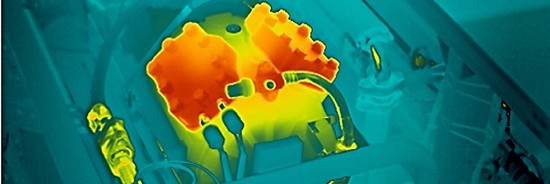The reduction of emissions and operating costs is one of the great development goals in the field of HVAC Systems. However, the trend towards the complete electrification of city buses raises the following additional challenges:
- Fully electric city buses do not have a combustion engine, which usually is the central heat source for passenger space heating.
- Keeping the aim of zero emissions on both a local and a global level in mind, the operation of fuel-driven auxiliary heating units must be viewed as critical.
- Because the amount of energy that can be taken out of the electric storage units is limited, HVAC systems need to fulfill higher demands.
- Both the electric energy storage units and the power electronics are only operational within certain given temperature limits, which might make the additional heating or cooling of these components necessary.
Against this backdrop, the Fraunhofer IVI conducts diverse research in the field of HVAC systems for electric vehicles.
One example of this research is the formulation and testing of concepts for the efficient heating of the passenger space in electric buses using heat losses, heat pumps and heat storage systems. In addition, the Fraunhofer IVI develops and implements different innovative concepts for the cooling of power electronics and traction batteries specifically for the application in electric city buses. Another area of work is the long-term thermal simulation of buses in order to determine their heating and cooling demands for a chosen period up to one year.
The solutions developed undergo a certification process within the overall system. Afterwards they are integrated into the vehicles as individual components and demonstrated in the scope of application examples.
[1] Hausberger, S.; Kies, A.; u. a.: Reduction and Testing of Greenhouse Gas Emissions from Heavy Duty Vehicles - LOT 2, 2012
